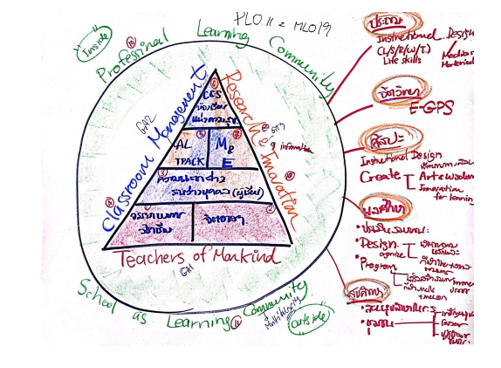Authentic assessment is essential for preparing industry-ready graduates and ensuring students achieve complex learning outcomes. Despite common beliefs that such assessments are difficult, time-consuming, and expensive to implement, there are accessible and effective methods available.
CALOHEA experts from seven ASEAN countries have compiled a series of Inspirational Examples. These examples showcase a range of approaches, from innovative techniques to simple strategies that any academic can incorporate, regardless of class size or budget.
The CALOHEA Erasmus+ project, coordinated by the Tuning Academy of the University of Groningen (the Netherlands) and the ASEAN University Network, is co-funded by the European Commission. Prince of Songkla University’s Faculty of Education has been an active participant since 2021.
How we PROMOTE Authentic Assessment at the PROGRAMME LEVEL?
After the CALOHEA team reviewed the evaluation strategies with the faculty members in the psychology program, we agreed to re-considerate the program’s PLOs and YLOs. The program chair raised a significant issue: Faculty members may not fully understand how their Course Learning Outcomes (CLOs) contribute to the achievement of PLOs and how the course assignment contributes to YOLs. Thus, we conduct the workshop with every faculty member who will teach first-year students in the Bachelor Education Program to discuss and design how they design and authentically assess students’ achievements. In fact, this program includes five majors: educational psychology, elementary education, health education, art education, and physical education. So, we expand our participants from one major (i.e., educational psychology) to four more majors. Each major also has their own Major Learning Outcomes (MLOs).
About 20 faculty members who teach first-year students in the program participated in the workshop. The workshop followed three RMs of the CALOHEA project. First, related to RM1 (qualification framework), we conceptualized the PLOs and the MLOs. This framework will guide faculty members in creating real-world tasks and authentic assessment strategies. The following figure 1 shows the brainstorming result. There are three dimensions of the students’ graduate attributes (GA): Teachers of Mankind, Classroom management, and Research, Information, and Innovation. Each dimension is related to individual PLOs. For instance, GA1 (teachers of mankind) is related to PLO1 (professional ethics) and PLO2 (Volunteering). In addition, this program indicated 11 PLOs: 1) Professional ethics, 2) Volunteering, 3) Learning of Individual students, 4) Classroom management, 5) Active learning, 6) Happiness classroom relevant to social and cultural dimensions, 7) Measurement and evaluation, 8) Research, 9) Information and technology, 10) Innovation development, and 11) Professional learning community. By creating this framework, the faculty members reflect that they better conceptualize the program learning outcomes, which could help them better design authentic tasks for their course in more holistic ways. In addition, this framework helps individual faculty members work collaboratively since they can better imagine how the course-designed tasks achieve the program goal: to develop teachers who will comprehend to create a happy classroom full of socially and culturally diverse students.

Figure 1 : The PLOs and MLOs framework of the Bachelor of Education program.
Second, the program members designed how to appropriately create student workloads for each program year that is related to RM2 of the CALOHEA project. For example, PLO1 aims to promote students’ professional ethics, though the year-one focus is only to promote their teachership. Besides, PLO2 inspires students to volunteer in the community. However, in the first year, the program only expected students to analyze the environmental and social changes before using their knowledge and skills to propose the volunteering projects in the second year and organize them while studying in the third-year program. Third, to promote authentic assessment, for example, the scenarios of villagers and the real problems in the surrounding community, which students may face when they become teachers in the future, will be created for the class discussion and learning tasks. Thus, this part of the workshop is related to RM3 of the CALOHEA project. In sum, to promote authentic assessment at the program level, the PSU CALOHEA team ensures that faculty members comprehend the PLOs-YLOs-MLOs framework, create students’ workloads according to CLOs achieving PLOs, and systematically and collaboratively design authentic tasks and assessments to guarantee students’ learning outcomes of the program. (Please find the workshop photo by clicking here).
Visit the CALOHEA website (https://calohea.org/) to learn more and explore the available resources.

![]()







